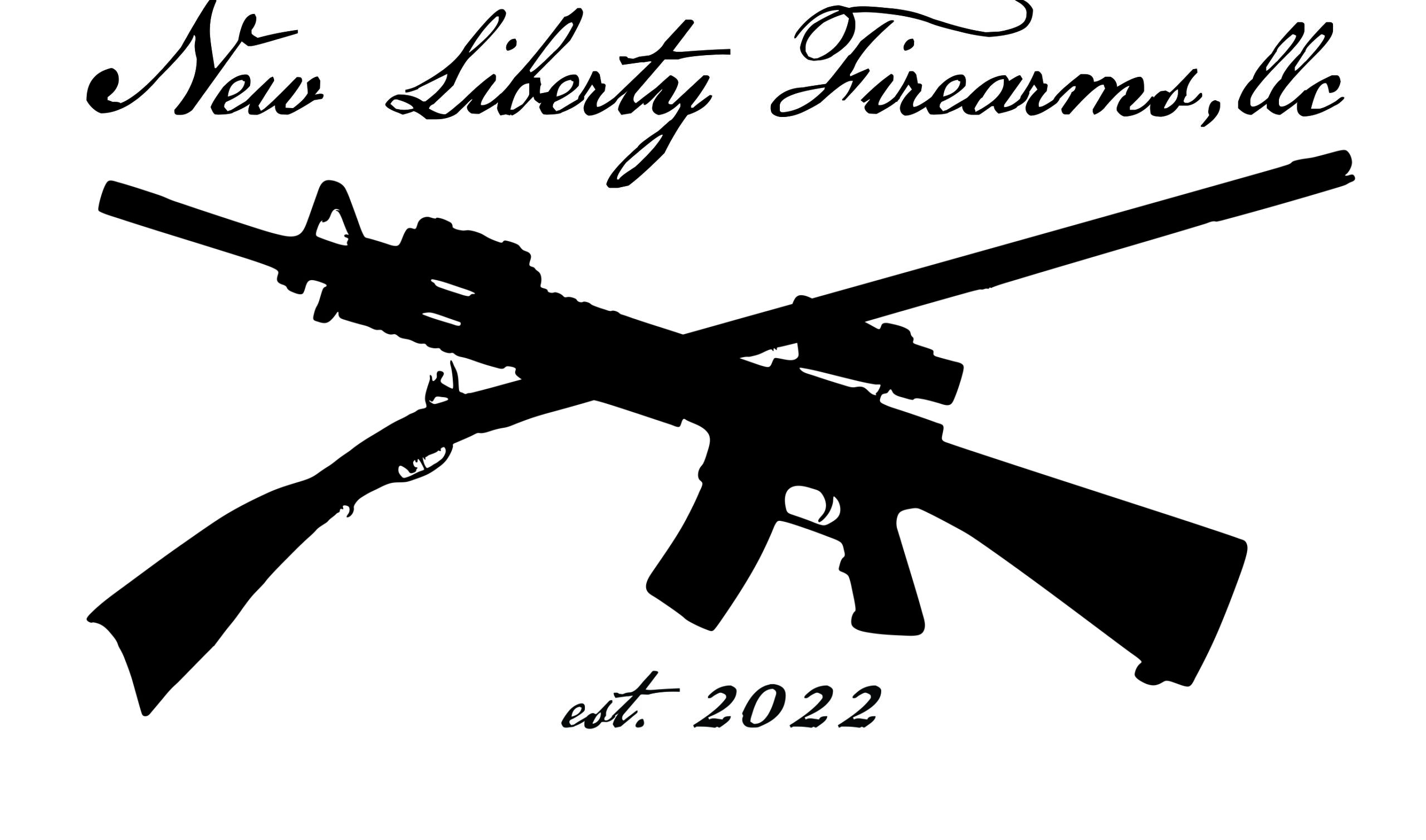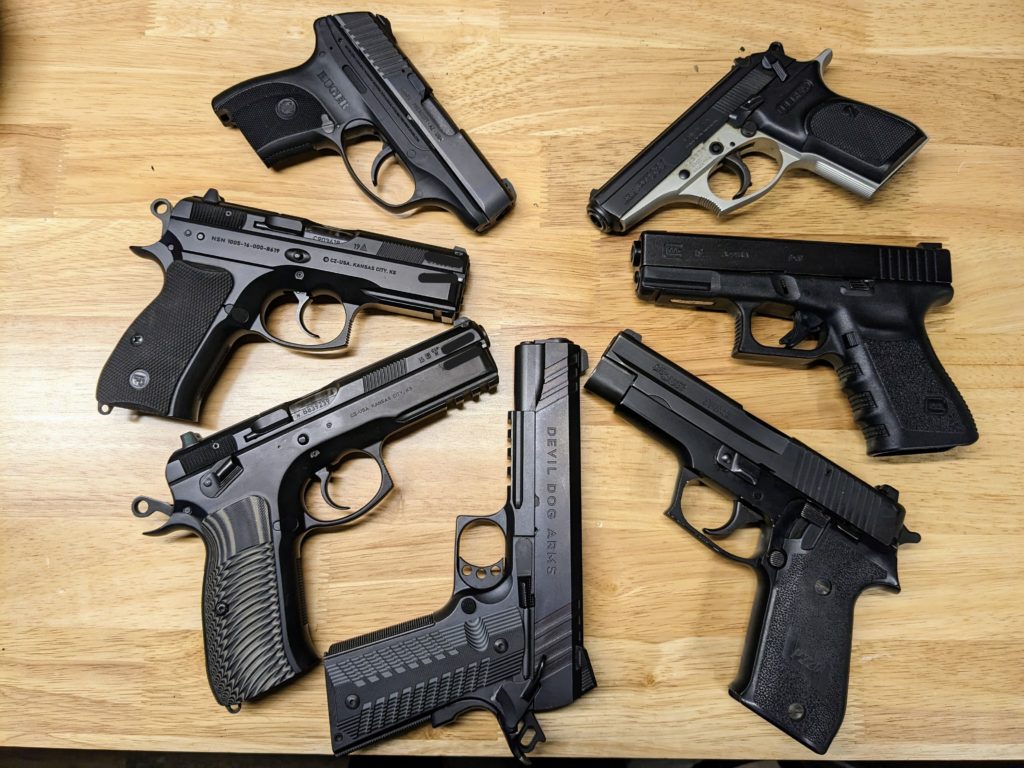
There is a dizzying array of pistols out there for a potential buyer to have to decided between. There are many decisions that must be made to determine what handgun will best suit your needs. Our “Basics of Semi-Auto Pistols” is designed to arm the consumer with knowledge to help them make the best decision when buying a new pistol. We will cover the differences between revolvers and semi-automatic pistols at a later date, with this series focusing just on semi-automatic pistols. Semi-automatic means that after the trigger is pulled, and a cartridge fires, the pistol will automatically cycle and load the next round into the chamber, which can then be fired with another pull of the trigger, this process will repeat until there are no more cartridges left in the magazine.
In common with the AR rifle series of blog posts we are doing, we believe that the starting point for purchasing a pistol is to decide what the pistol is going to be used for. Pistols are commonly used for self defense, both as concealed carry or home defense firearms, plinking, hunting, or competition. Some pistols may be suitable for multiple of those categories, and some pistols may be tailored to excel at one. The intended use will determine desirable characteristics when it comes to things like caliber, size, weight, magazine capacity, aftermarket support, and physical controls on the handgun.
For this post, we will be talking specifically about the most common trigger action types for pistols, as this will influence a number of other traits of the handgun. We may delve into things like straight blowback vs. tilting barrel operating system designs in a future post, but for this post we are going to focus on how the trigger interacts with the other components of the firing mechanism. There are 4 common action styles that you will find in pistols: single action, double action only, double action/single action, and striker fired.
Single Action (SA):
Single action pistols tend to have some of the simplest mechanical designs for their firing mechanism, since the trigger is conducts one action during the operating cycle, releasing the hammer to strike the firing pin. The iconic single action semi automatic pistol in the US market is the 1911 style handgun, which was the standard military sidearm for most of the 20th century. When a magazine is inserted into a 1911, or other single action handgun, the slide is then racked to the rear and released, and the hammer will be pushed back by the slide during that motion, and then the hammer will remain locked in the rearward position. The hammer will stay in this rearward position until the trigger is pulled, which interacts with the sear inside the pistol to release the hammer, firing the pistol.

Why might someone want a single action pistol? They tend to have lighter and cleaner trigger pulls than other action types. The Devil Dog Arms 1911 in the pictures has an excellent, short, crisp trigger pull of around 3 pounds, 6 ounces. The less force that is needed to manipulate the trigger, generally the easier it is to shoot a pistol accurately, since less force is being exerted by the trigger finger on the gun during the firing process.
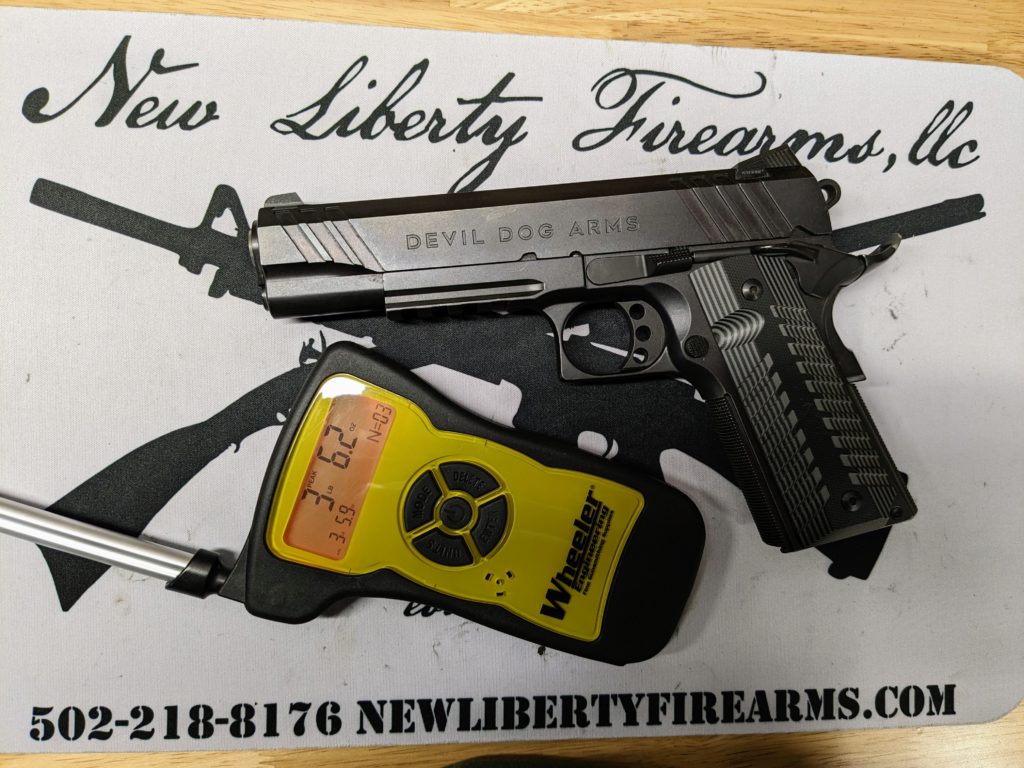
So why might someone not want a single action pistol? they tend to have lighter and cleaner trigger pulls than other action types. Firearms are a combination of compromises, and often with a lighter trigger pull, manual safeties will be added to a firearm to prevent negligent discharges by the user. This is especially important for firearms used for defensive purposes, since the user is responsible for every round that comes out of their firearm. The 1911 style pistol has 2 manual safeties on it, a frame mounted thumb safety, and a grip safety. Both safeties must be deactivated by the user in order to fire the pistol. It should be noted here, that safeties are a mechanical device that can fail, and the rules of safe gun handling must always be followed with a firearm. If you have a firearm equipped with a safety device, you should not modify or disable the safety.
So, single action firearms give us a light trigger pull, but often require additional manual safeties in order to be carried safely.
Double Action Only (DAO):
With double action only pistols, the trigger performs two actions during the trigger pull. In addition to releasing the hammer to strike the firing pin, a double action trigger will also pull the hammer to the rear before releasing it. The hammer lacks an engagement surface to be held in the rearward position on these pistols, and will return forward automatically after the slide cycles. DAO pistols semi-automatic pistols do exist, but tend to be less common that some of the other options. The Ruger LC9 in the pictures is an example of a modern DAO pistol.
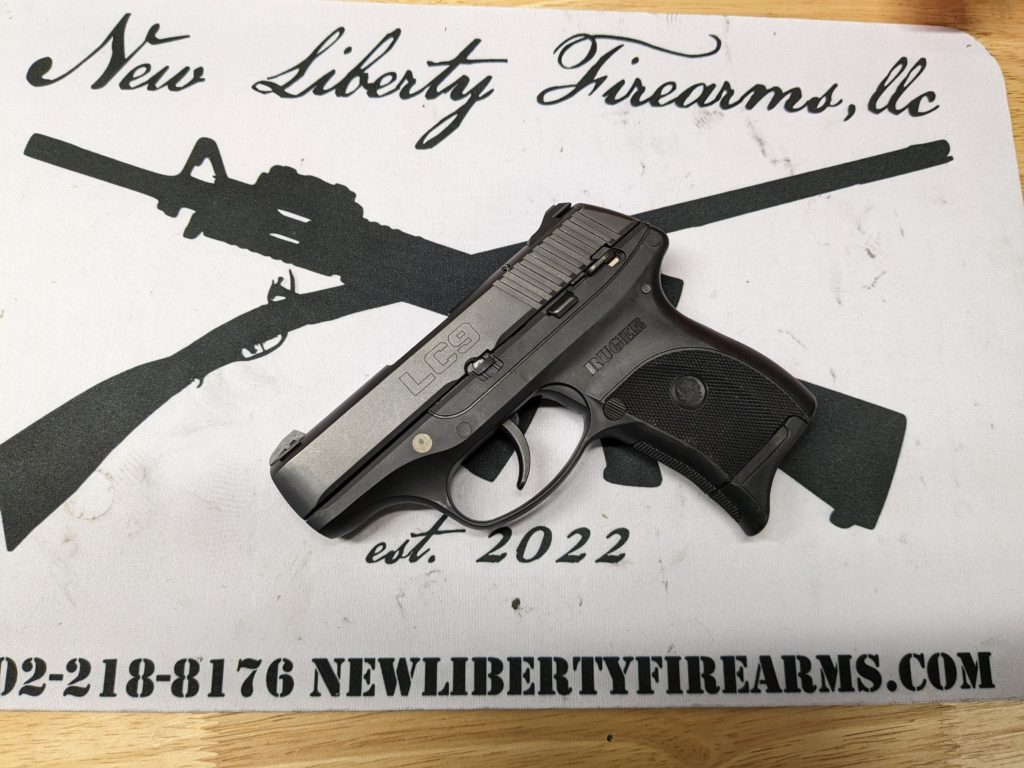
DAO pistols tend to have much longer, and heavier trigger pulls than single action pistols, so the pros and cons can be seen as the inverse of the pros and cons of the SA action type. For the example LC9 that I have, the trigger pull averaged slightly over 7 pounds with my trigger scale. The trigger pull is also much longer, with .7″ of movement between the trigger’s forward position and rearward position, while the 1911 had less that .2″ of movement to the rear. So, with these particular examples, the DAO had more than twice the pull weight, and more than three times the length of rearward movement. The author personally find the DAO pistol to be much more difficult to shoot at distance because of this. However, from a safety perspective, the DAO trigger would be much harder to accidentally engage. So, it again comes down to the intended use of the pistol. It should be noted that this particular DAO LC9 also has a frame mounted manual thumb safety.
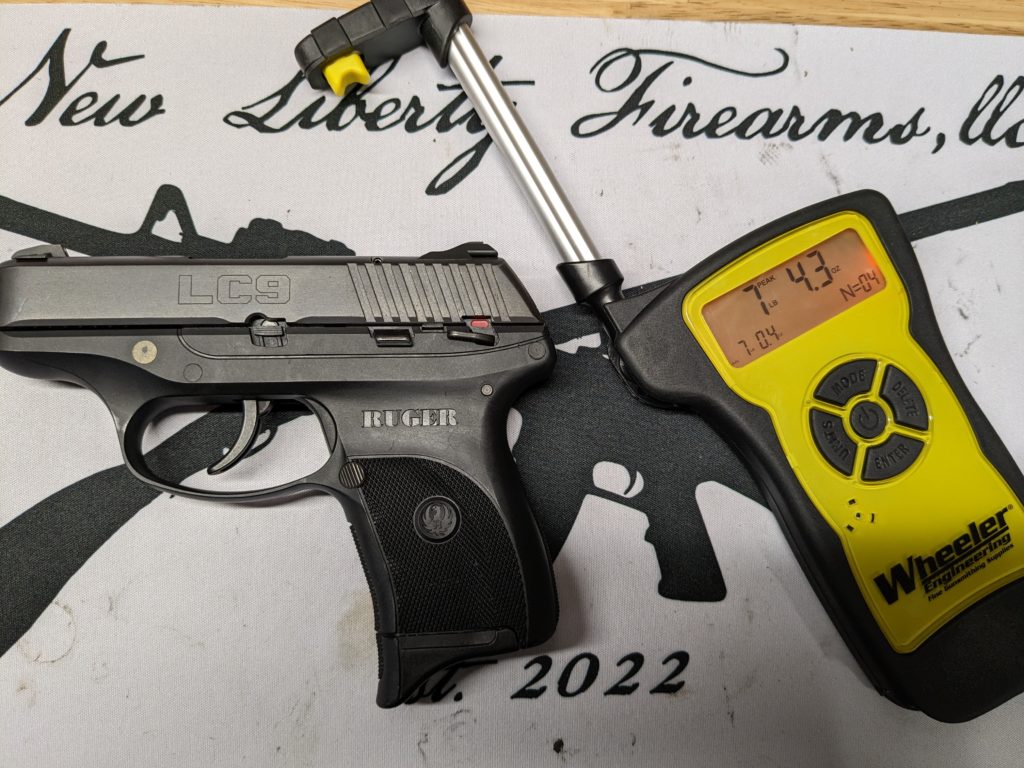
Double Action/Single Action (DA/SA):
A double action/single action pistol will have the capability to fire in either double action, or single action. How this typically presents itself is that when the slide moves to the rear, the hammer will be locked in the rearward position. DA/SA pistols often, but not always, have some sort of de-cocking mechanism to allow the hammer then safely be lowered to allow for double action firing. If your pistol is equipped with a decocker, always use this method to lower the hammer, as trying to hold the hammer and lower it can lead to negligent discharges. During a string of fire after decocking the pistol, the first round will be double action, and then all the subsequent shots will be single action, since the slide will push the hammer to the rear locked position during the cycle of operations.
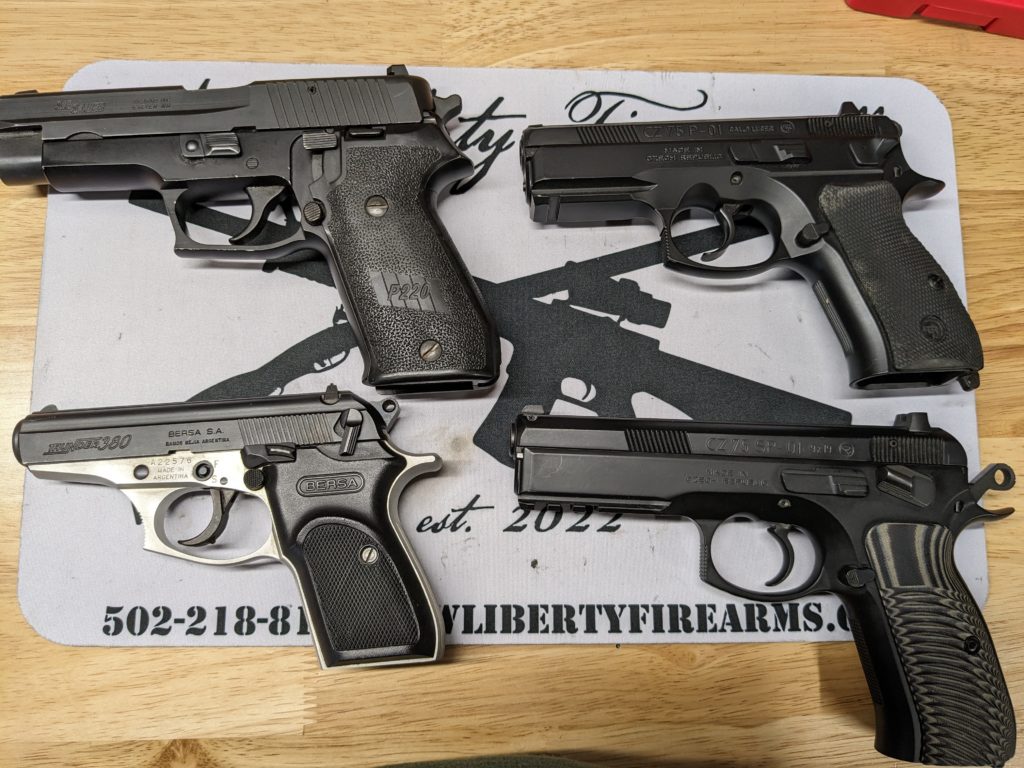
So, the advantages of a DA/SA pistol are that if the pistol is being carried for defensive purposes, it requires a long, heavy trigger pull for the first shot, and then lighter, shorter pulls for subsequent shots. For instance, the Sig P-220 in the pictures has a double action trigger pull just over 8 pounds, and a single action pull around 3 pounds 4 ounces. In addition, in double action the trigger pull length is around .8″, while in single action it is approximately half that. There are a number of different styles of controls on DA/SA guns, including decockers, combinations decockers and manual safeties, and manual thumb safeties that do not act as decockers.
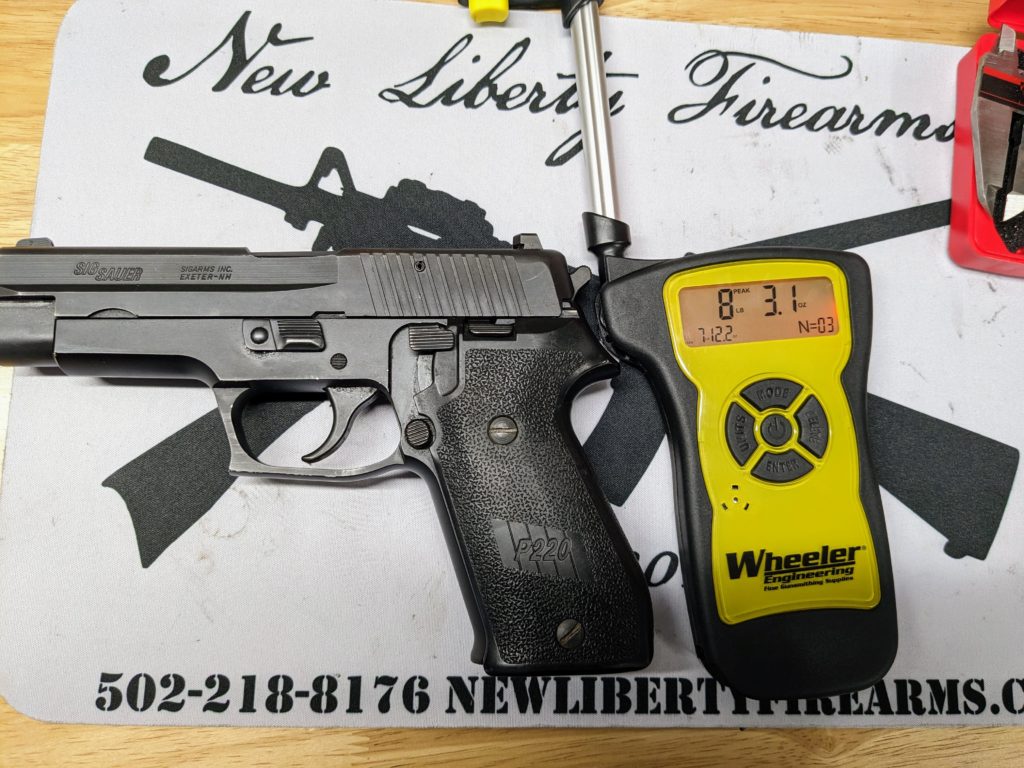
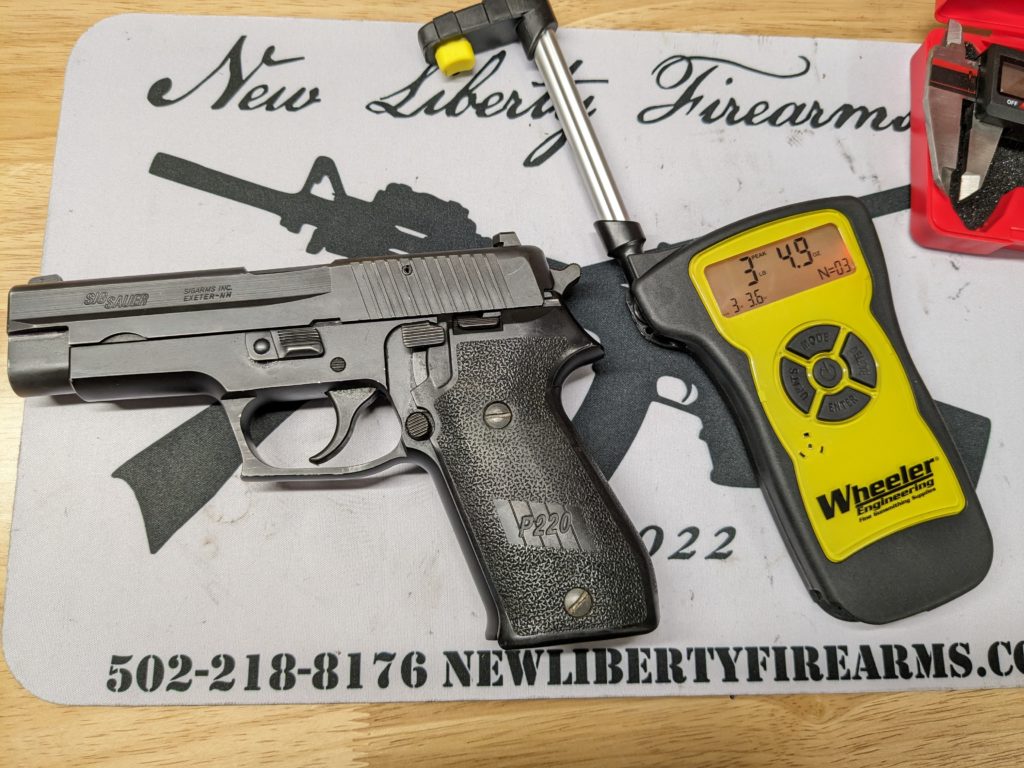
A primary potential disadvantage of a DA/SA pistol is that it is possible to have different trigger pulls during the same string of fire, with the potential for a long, heavy first pull, and then shorter, lighter pulls after that. This is something that can certainly be trained to overcome, as DA/SA guns like those from Beretta, Sig Sauer and Smith & Wesson have long been popular choices with police departments, but just something the consumer needs to be aware of. DA/SA guns are also slightly more mechanically complex, since the trigger needs to be able to interact with the hammer in multiple ways.
Striker Fired:
Some people may confuse striker fired and DAO pistols, but there are some key mechanical differences. SA, DA, and DA/SA pistols all have a hammer that the trigger interacts with, which transfers energy to the firing pin, in order to fire a round. A striker fired pistol does not have a hammer, it has a striker. The trigger in a striker fired pistol will interact with the striker, pulling it to the rear, and then releasing it to strike the primer and fire the round. Some of the most popular defensive pistols on the market are striker fired, including those from Glock, and the S&W M&P series of pistols.
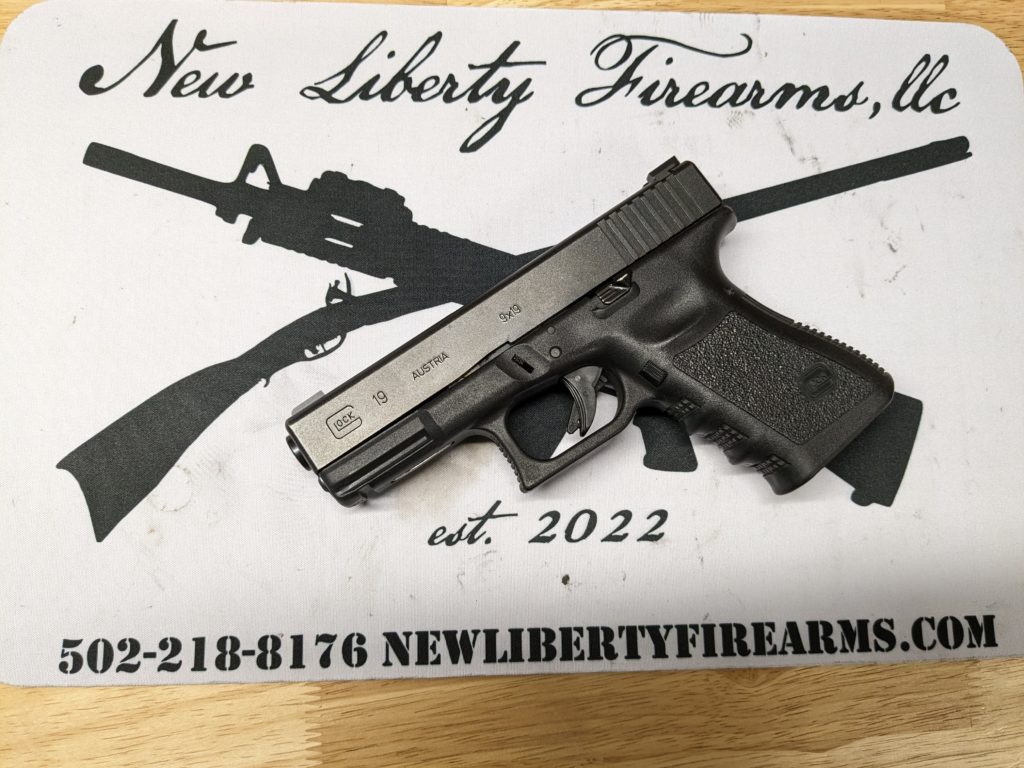
A striker fired pistol will again have the same trigger pull on each shot, and often will have moderate trigger pull weights. The standard weight for a Glock pistol is 5.5 pounds, which is in the middle of the single action and double action only weights above. Additionally, the striker fired pistol can have an enclosed slide, which can help keep dirt and debris from entering the rear of the slide, whereas hammer fired pistol have an opening at the rear for the hammer to travel in.
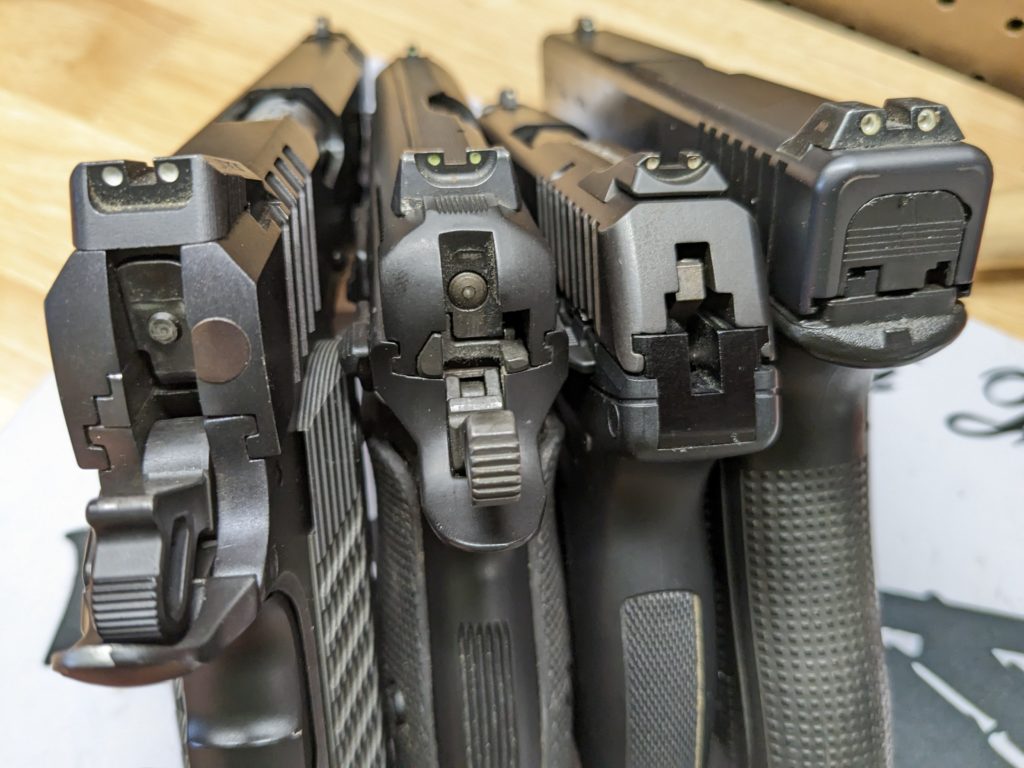
Current trends have striker fired pistols as being very popular choices for concealed carry firearms, however, there are still plenty of hammer fired firearms that are being used for defensive purposes as well. It all depends on the preference, skill level, and training of the individual using the firearm.
Conclusion:
As with all firearms purchasing decisions, your intended use of the firearm will help determine what compromises you will need to make in order to determine which action system is right for you, and your pistol. We hope that this article helped you learn some more about the various types of actions of semi automatic pistols, to help you make an informed decision. If you have any questions or comments, please let us know. And if you are currently trying to decide on what pistol might work for you, feel free to reach out and have a conversation so we can help guide that decision.
